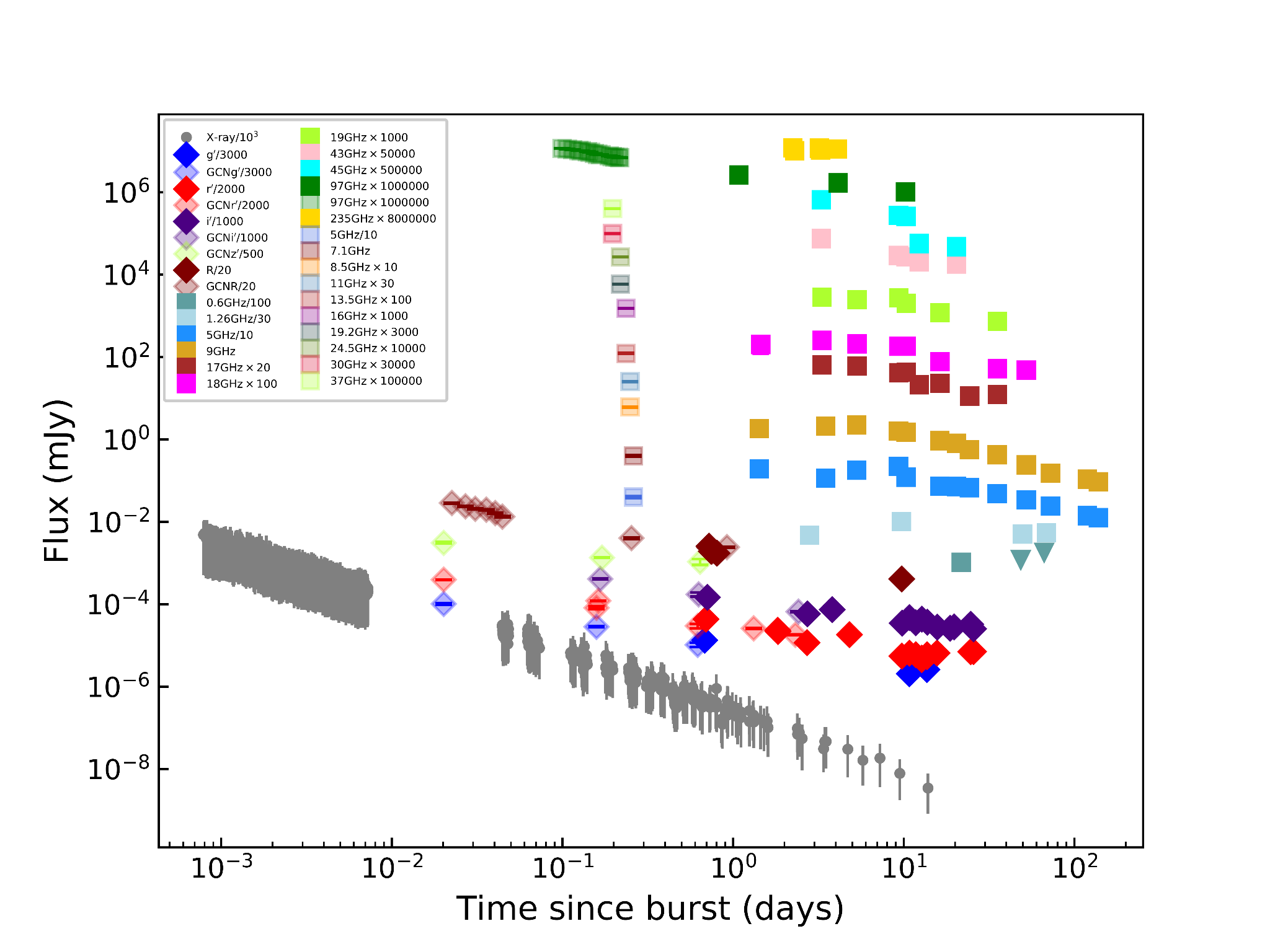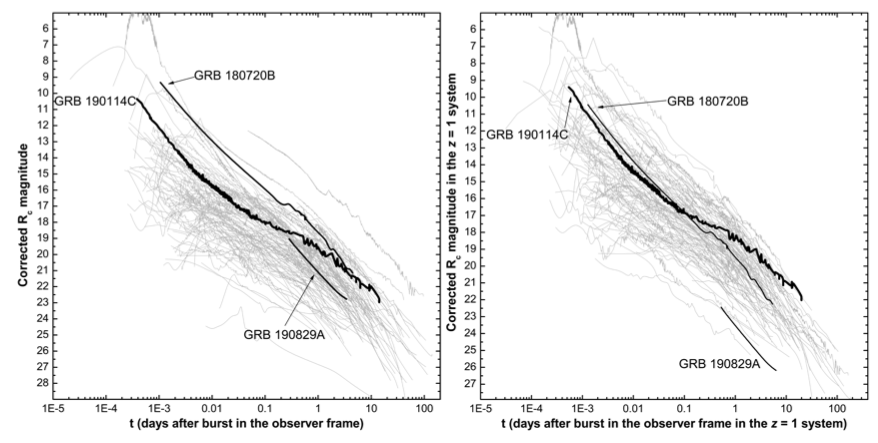Low-Frequency View of GRB 190114C Reveals Time-Varying Shock Micro-Physics
Gamma-Ray Bursts (GRBs) are the most luminous source of electromagnetic radiation in the Universe. They are thought to arise either from the collapse of massive stars or the merging of two compact objects (neutron stars, black holes) at cosmological distances. GRBs last for a fraction of a second to hundreds of seconds followed by an initial bright flash in high energies known as the ‘prompt emission’. A less luminous but a long lasting counterpart known as the ‘afterglow’ is detected after the prompt emission. Afterglows emit across a broad wavelength region of the electromagnetic spectrum. For the first time on 14-January-2019, very high energy (VHE) TeV photons were detected from GRB 190114C (located at a redshift of z=0.425) with the MAGIC telescopes. Extensive multi-wavelength campaign, with over two dozen observatories and instruments, provided an unprecedented picture of the afterglow from radio to TeV energies. This unconventional discovery of TeV photons provides critical insight for understanding the physical processes at work in GRBs. It was ascertained that the likely origin of TeV emission is due to the inverse Compton process. This discovery was reported in Nature by the MAGIC collaboration. Since then two more GRBs have shown the presence of TeV photons making the total number of GRBs with TeV emission as 3 so far.
As a continuation of the early multi-wavelength campaign, our group performed extensive observations at low frequency bands in optical, cm and mm bands spanning upto nearly 140 days after the burst. The optical observations were carried out with the Growth India Telescope (GIT), Himalayan Chandra Telescope (HCT) (both located in Hanle, Leh, India) and Devasthal Fast Optical Telescope (DFOT, located in Devasthal, Nainital, India). The cm and mm band observations were done with the upgraded Giant Meterwave Radio Telescope (u-GMRT, located in Khodad, Pune, India), Australia Telescope Compact Array (ATCA, located in New South Wales, Australia) and Atacama Large Millimeter Array (ALMA, located in Atacama Desert, Chile). This study was led by Dr. Kuntal Misra from Aryabhatta Research Institute of Observational Sciences (ARIES), Nainital along with significant contributions from national and international collaborators.

Figure 1: Multi-band light curves of the afterglow of GRB 190114C from X-ray to the radio/mm bands.
Figure 1 shows the multi band light curves of the afterglow of GRB 190114C. The X-ray luminosity of the afterglow of GRB 190114C is similar to the majority of the GRB population. On the other hand, in optical bands, at early times the afterglow of GRB 190114C is one of the brightest detected so far observationally despite the high line-of-sight extinction. However, when the light curves are shifted to z=1 frame, GRB 190114C afterglow is seen to be of only average luminosity initially and mirroring the results found in X-rays (Figure 2).

Figure 2: Left: GRB 190114C afterglow in the observer frame indicating it as one of the brightest known afterglows at early times. Right: Afterglows shifted to the z=1 frame indicating that the afterglow of GRB 190114C is of average nature at early times.
Long-term monitoring of the afterglow of GRB 190114C reveals the complex nature of the afterglow, which does not follow the spectral and temporal closure relations expected from the standard afterglow model. Our detailed modeling of the afterglow, in both constant density and wind medium, indicates that the microphysical parameters of the external forward shock, representing the equipartition of shock-created energy in the non-thermal electron population and magnetic field, are evolving with time. A time evolution of shock microphysics, at early times may play a role in producing the bright TeV emission. The observations show the importance of low frequency campaigns in obtaining an exhaustive picture of GRB afterglow evolution.
This paper is published in Monthly Notices of the Royal Astronomical Society (MNRAS).
Publication link: https://doi.org/10.1093/mnras/stab1050
A version of this story is also available on DST website.

